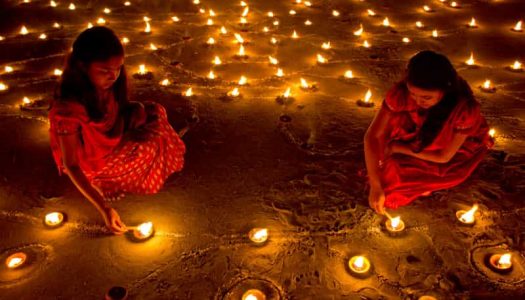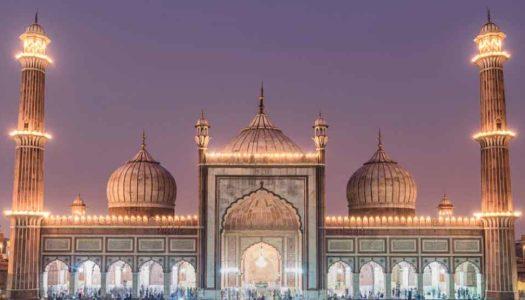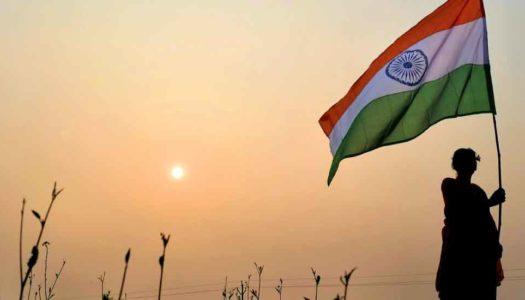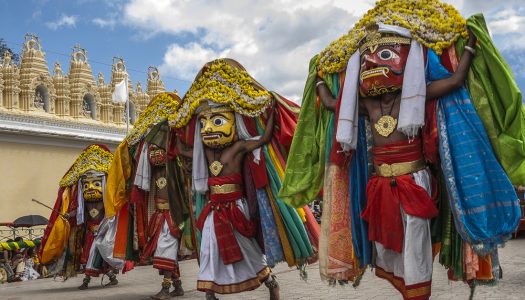Entangled by the mythological narratives, India is a wholesome destination to discover cultural extravaganza! From the poetic contributions of Rabindranath Tagore to the dohas (short poems) of Sant Kabirdas, a lot remains away from the light of travellers. One such festival to honour the divine of Maharishi Valmiki, known as Maharishi Valmiki Jayanti, this day commemorates the prominent contributions of this holy sage.
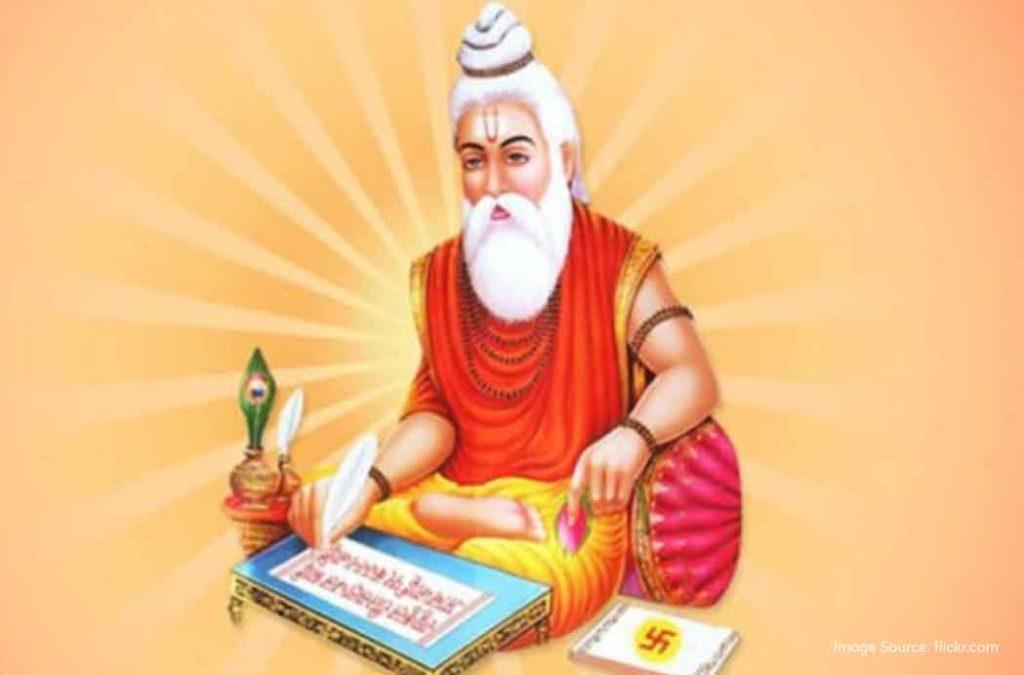
Valmiki Jayanti is a great way to remember the Adi Kavi (composer of the first Sanskrit poem). He is specifically known as Adi Kavi due to his initial contributions in the religious context. Now that you are already here, let’s reveal the myths, theories and facts of the famous Maharishi Valmiki.
Maharishi Valmiki: What’s in a Name?
An intriguing twist in understanding the grace of the composition of the Ramayana is within the question of its original creation. What makes mythology interesting is the series of stories attached to one significant event. While you know that Maharishi Valmiki is the composer of the Ramayana, you must know of the sacred stories associated with it. As per one of the legends, Valmiki was born as Agni Sharma. Another myth suggests that he was born as Rikshan, who was a hunter. Surprisingly, his birthdate or death anniversary remains a mystery. So, let’s understand the mythology.
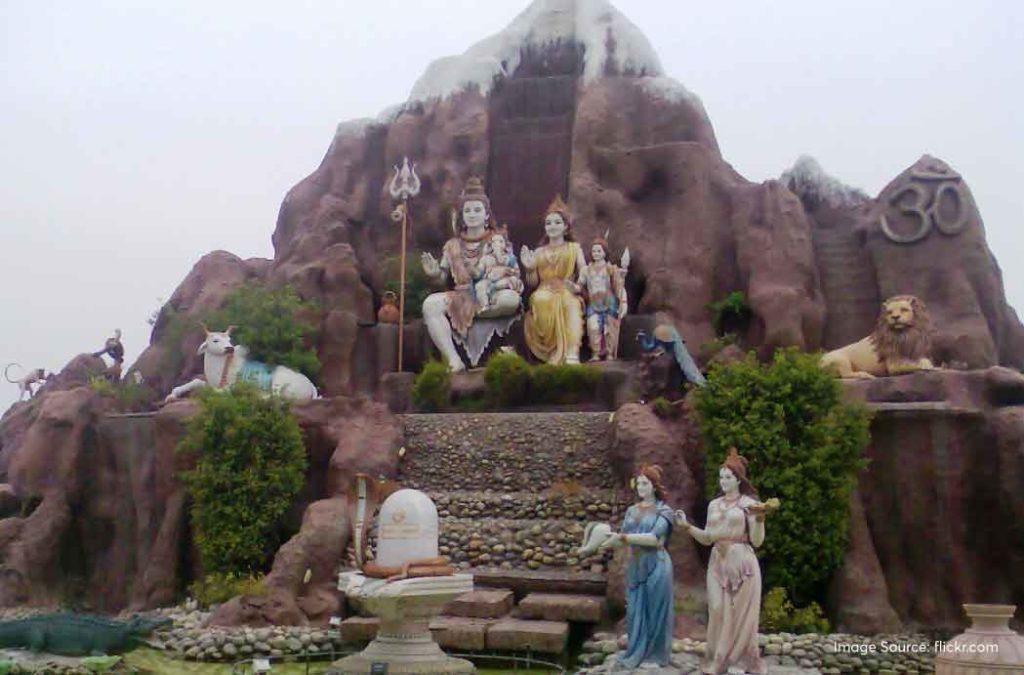
One of the legends suggests that Valmiki was a robber in his early life. As he wanted to feed his family, he robbed everyone who passed his way. Once he met Saptarishi (saints) on his way and decided to rob them. However, the saints were kind enough to understand the situation of Valmiki. He confessed that he started robbing only for his family, to which the saints asked Valmiki if his family would share his sins. After enquiring, he realised that he was the only person accountable for his wrongdoings.
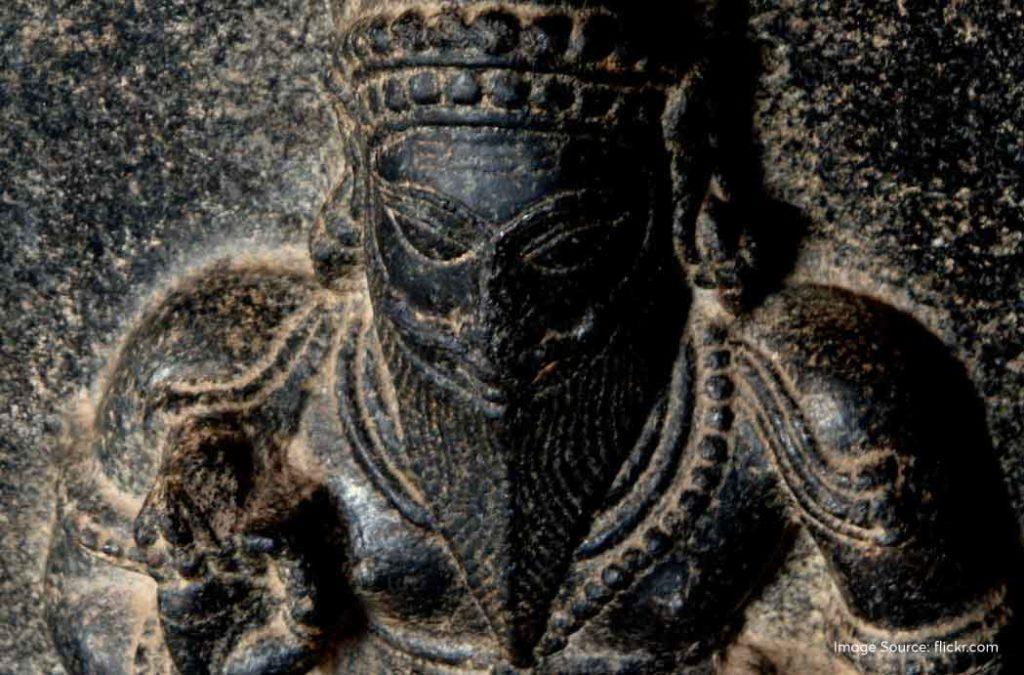
Knowing this, Valmiki performed penance in front of saints. They ordered him to chant the name of Rama; however, he did not agree. Later, the saints asked him to chant the name of any tree. Valmiki started chanting Mara Mara. Deep into the forests, the words Mara Mara started sounding like Rama Rama. Pleased by his dedication and devotion, the saints returned to the forest after years. They noticed anthills forming on his head, which are also called Valmika. That’s how this holy saint was renamed as Valmiki.
The above-mentioned legend is associated with Nagara Khanda of the Skanda Purana. You can read more in the Mukhara Tirtha section.
The Sage turned Holy Writer of the Ramayana
Narada, also known as Narada Muni, has been known for his wisdom and clever thoughts. According to mythology, he travelled across the universe to spread knowledge and wisdom among people. That’s how the story of Valmiki began. Narada Muni encountered Valmiki, who was known for his past crimes and unruly behaviour. Even after realising his mistakes, Valmiki was troubled by his wrongdoings.
Curiosity to learn and know about the true nature of dharma instantly sparked in Valmiki after talking to Narada. He enquired about the philosophy of righteousness. He was eager to understand if there was any solid example that defined the essence of goodness and kindness. That’s when Narada Muni decided to recite the life of Lord Rama. He specifically mentioned his struggles, his righteous behaviour against evil and the abduction of Goddess Sita by Ravana.
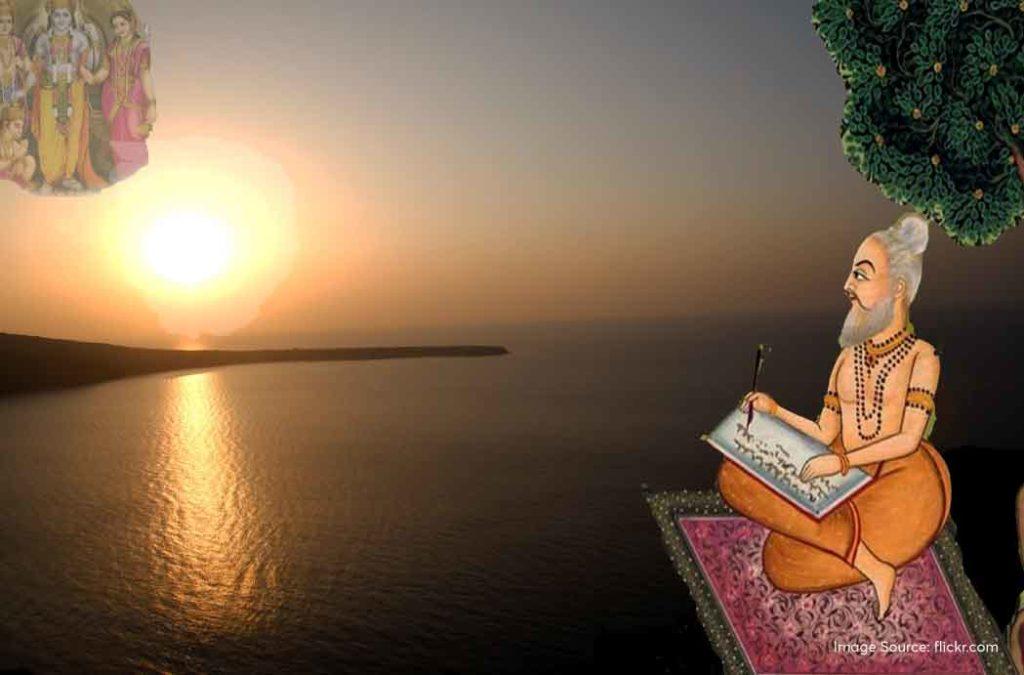
After understanding the grace and divinity of Lord Rama’s life, Valmiki was astonished! He surely experienced a sense of relief as he found the virtue of righteousness. He began meditating on the teachings of Rama as explained by Narada Muni. You must be shocked to know that a robber turned sage received sacred inspiration. He was immersed in the thoughts of Lord Rama throughout his journey.
While he was wandering in the forest, he saw a hunter kill one of the pairs of lovebirds. With utmost sorrow, he expressed the loss of a loved one through a poem. The scene was his original motivation that led to the creation of the Ramayana. The below mentioned is the first verse in the world of Sanskrit literature.
Maa nishaada pratishthaam tva
Maagamah shaashvateeh samaah
Yat krauncha mithunaat ekam
Avadheeh kaama mohitam
The verse means that the hunter shall not receive any resting place in the world because of his act of killing a bird that was filled with the feeling of love. It is also believed that this was rather a curse for the hunter, which however turned out to be the first shloka in the epic Ramayana.
Later, Maharishi Valmiki was encouraged by Narada to continue writing. He drafted everything about the virtues of Lord Rama, stories of Ayodhya, tales and virtues of Goddess Sita and loyalty of Lord Hanuman. He highlighted the moral of good over evil, thereby making the Ramayana popular across the globe.
Celebrations and Traditional Rituals across India
1. Temple Visits
Most devotees across the country visit temples to pay respect to Maharishi Valmiki. While there are a few temples dedicated to this holy sage, some people even visit Lord Vishnu temples for prayers. Temples of Valmiki are decorated with garlands and lights to celebrate the joyful occasion.
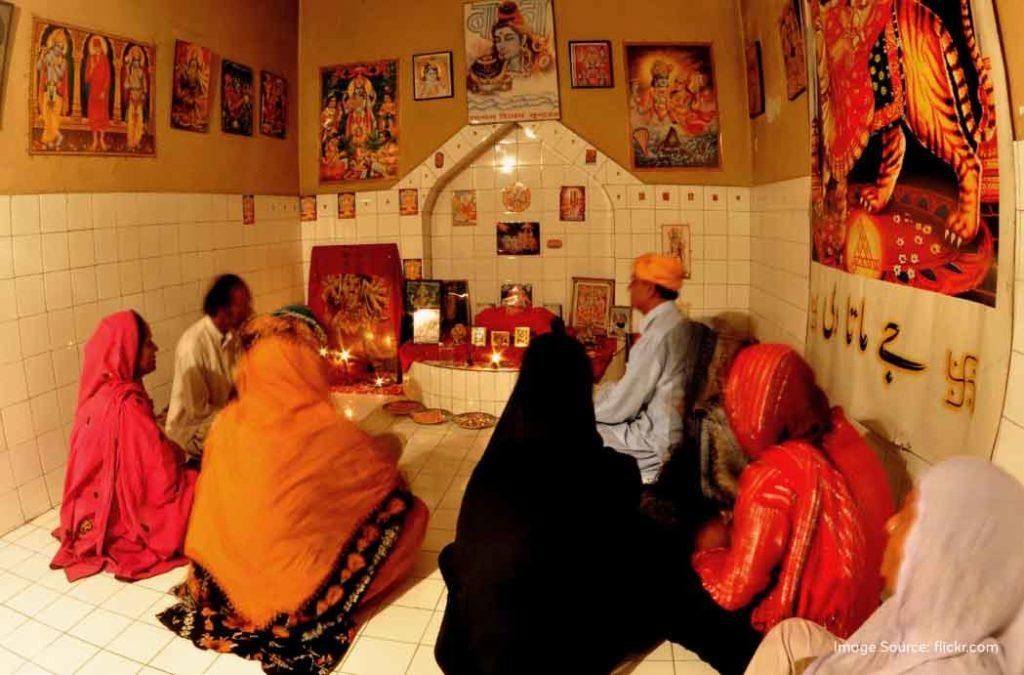
Most devotees indulge in puja on this auspicious day. It fills the atmosphere with extreme divinity and respect for the sage. Temple visits are especially important on auspicious days and Lord Ram as well as Sita Navami.
2. Bhajans
Bhajans are religious musical tones and lyrics sung at places of worship. While Maharishi Valmiki is worshipped across India, you can most likely hear bhajans dedicated to Lord Rama. It is because Valmiki considered Rama to be the supreme power of righteousness. That’s exactly why many communities gather to chant Lord Rama’s name and sing devotional songs.
3. Spiritual Discourses
You cannot miss being a part of spiritual discourses on the auspicious day of Maharishi Valmiki Jayanti. As the sage composed the epic Ramayana, the stories of Lord Rama and Goddess Sita are recited in temples. Some cities also organise religious ceremonies and gatherings to educate young people about the history of Valmiki and the creation of the holy book.
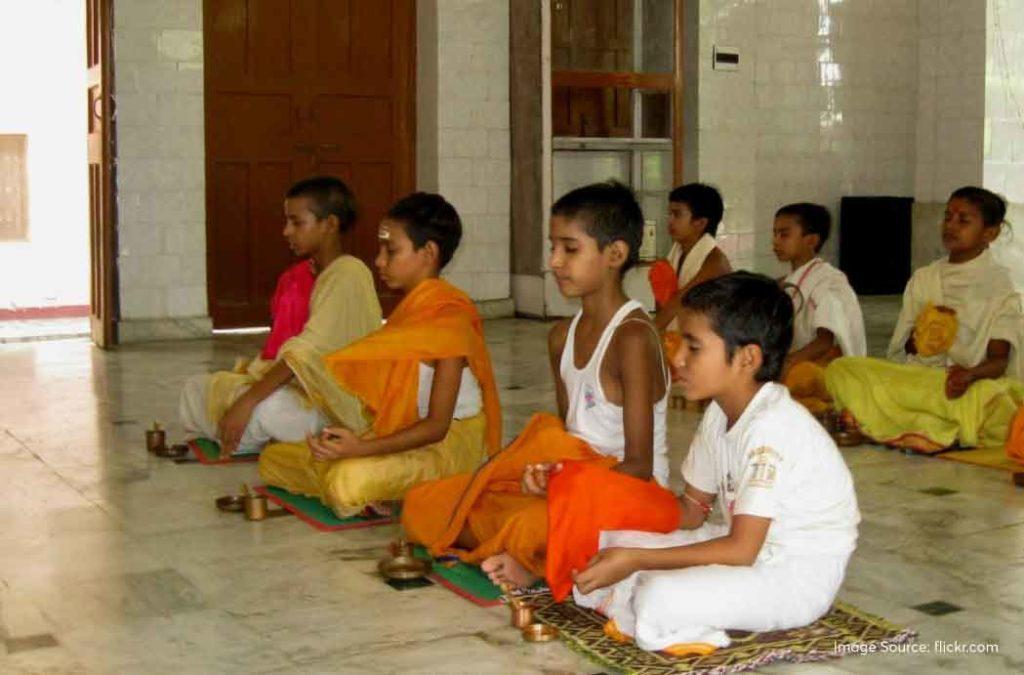
As Maharishi Valmiki drafted many rituals of dharma, he also mentioned ego and attachments. All the incidents and teachings are narrated in an elaborate manner on this day. If you get an opportunity to be a part of the discourse, you are certain to learn about true devotion, selfless service and the importance of a teacher like Narada.
4. Community Feasts
Community feasts, also known as Bhandaras, are generally arranged in temples or open grounds. Interestingly, you can enjoy delicious food, no matter your caste or creed. As Ramayana talks about compassion and seva (service), these feasts attract hundreds of devotees.
In fact, many devotees choose to serve others, and there are no specified waiters for such gatherings. People happily volunteer as an act of doing seva. It is more like a collective act of kindness, allowing people to do something for society. Such feasts on Maharishi Valmiki Jayanti stand to be the perfect example of community welfare and belonging among the members.
5. Performances
No celebration is complete without artistic humans dressing as the characters of the Ramayana. Maharishi Valmiki Jayanti witnesses various cultural performances where locals dress up as Valmiki, Lord Rama, Narada Muni and Goddess Sita.
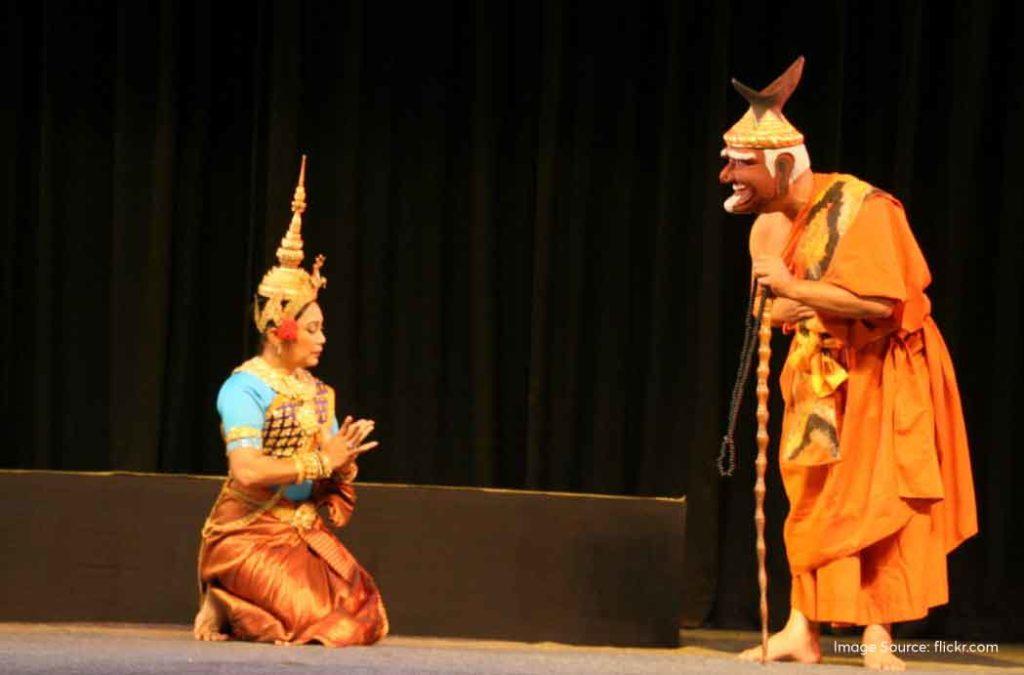
With the usage of sound and light, they recite dialogues and immerse themselves in their respective roles. It is surely a wonderful site to see, as you can sense the liveliness and cheer from the audiences. Even in modern cities, such performances can be seen as popular theatre arts. Such celebrations provide an opportunity to showcase the rich religious history of India.
6. Public Rallies
Moving through the streets to spread out important messages is surely not an uncommon practice. Just like you go for heritage walks, this is more like a cultural walk accompanied with music. Many states celebrate Maharishi Valmiki Jayanti by carrying out public rallies.
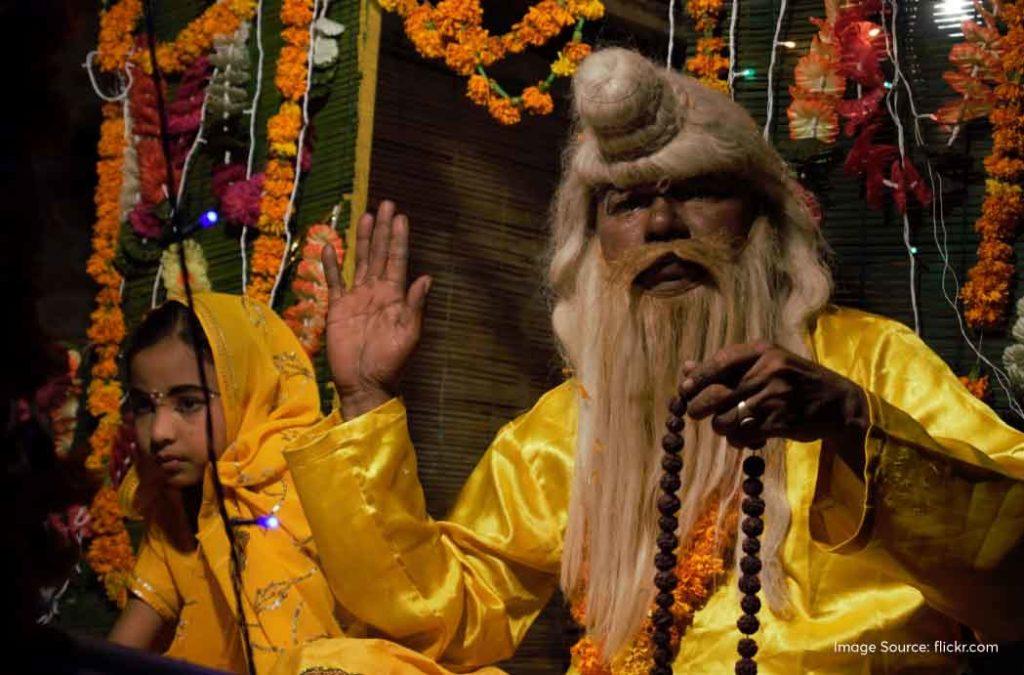
These rallies move through different streets, thereby inviting other citizens to participate. Moreover, you can see massive posters and portraits of the sage. While some regions organise a dedicated music system, others prefer to chant the verses of Ramayana throughout the procession.
7. Charity Events
Communities celebrating Maharishi Valmiki Jayanti often indulge in the idea of charity and acts of service. People belonging to the Valmiki community especially donate food and clothing to the underprivileged. Similarly, donations made in the temple or cultural centre are used for the upliftment of society, including educating girl children, improving sanitation and so on.
Maharishi Valmiki Jayanti: Temples and Ashrams in India
1. Bhagwan Valmiki Tirath Sthan, Amritsar
Situated in Amritsar, Bhagwan Valmiki Tirath Sthan is a massive place of worship. Dedicated to Valmiki, the place encapsulates you with its beautiful architecture and intricate carvings. Legends suggest that Goddess Sita spent her time here after the victory of Lanka. It is also believed that she gave birth to Lav and Kush at this divine place.
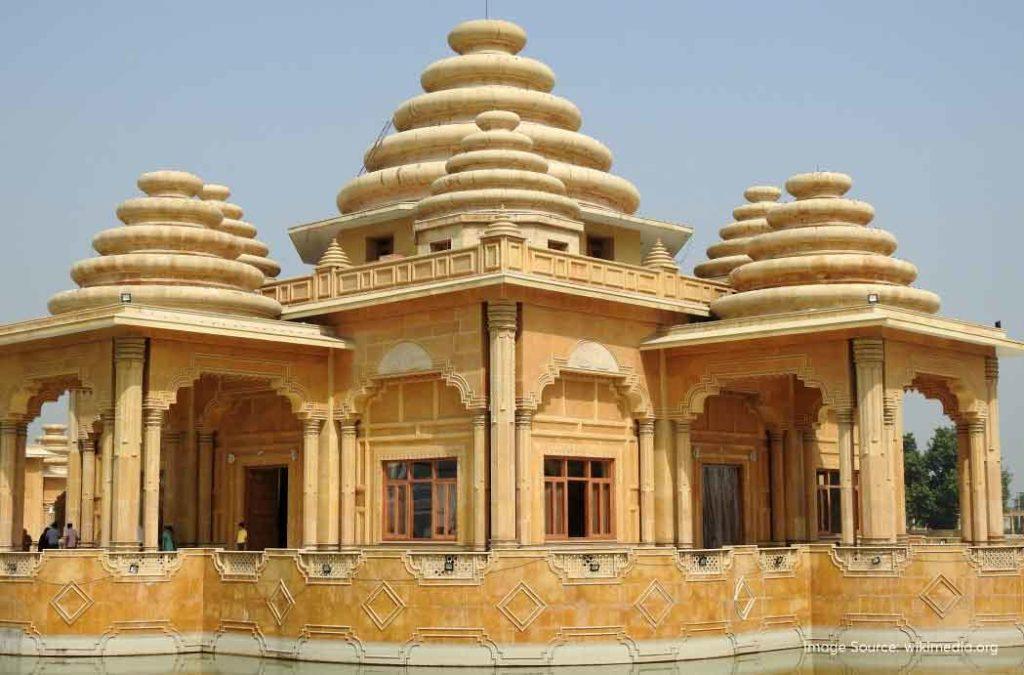
While the claims and legends are debatable, you can only find out more when you visit this place. It also has a large statue of Lord Hanuman overseeing the ashram. The environment is best for a peaceful meditation session and self-reflection. It is best to book affordable hotels in Amritsar to easily seek blessings from many other temples in Amritsar.
Book Budget Hotels in Amritsar
2. Balmiki Ashram, Punjab
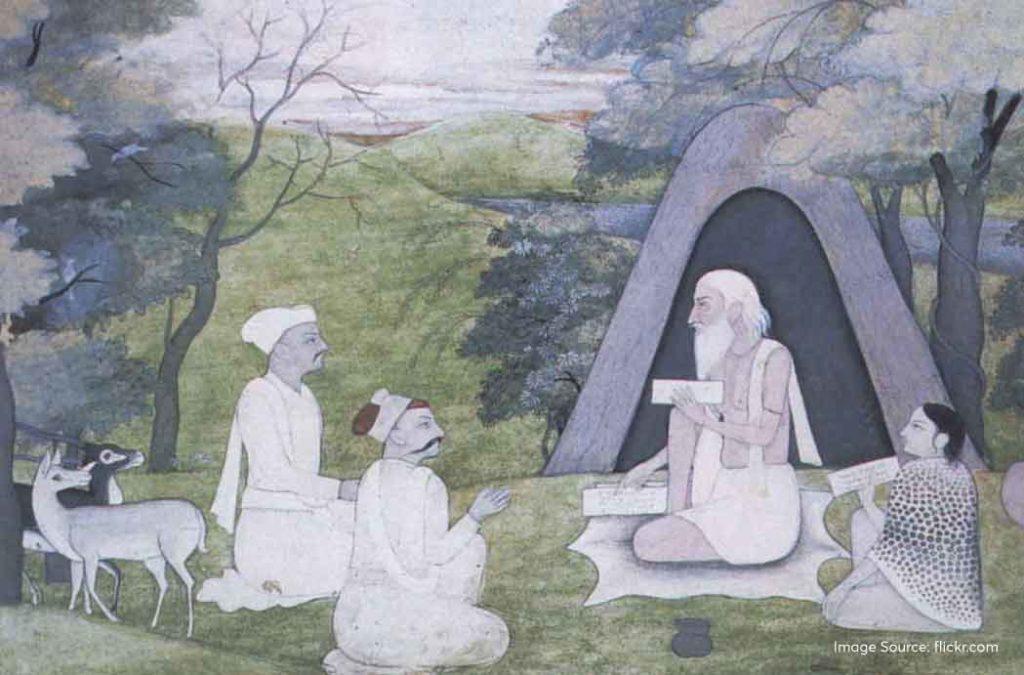
Balmiki Ashram is another important site of worship located in Hoshiarpur. While it is a small temple, it is extremely revered by the local communities. Many discourses and bhajans are organised in the temple to honour the contributions of Maharishi Valmiki. When in Punjab, mark this place on your list!
3. Valmiki Ashram, Bithoor, Uttar Pradesh
Mythologies are mysterious, as you never know which one is true. Valmiki Ashram in Uttar Pradesh is also believed to be the birthplace of Lav and Kush. As you enter the temple, you can sense tranquillity in all corners. Moreover, it also has a Sita Kund and an ever-growing Neem tree. The legend suggests that Lav and Kush received the teachings of Ramayana right from Maharishi Valmiki at this place.
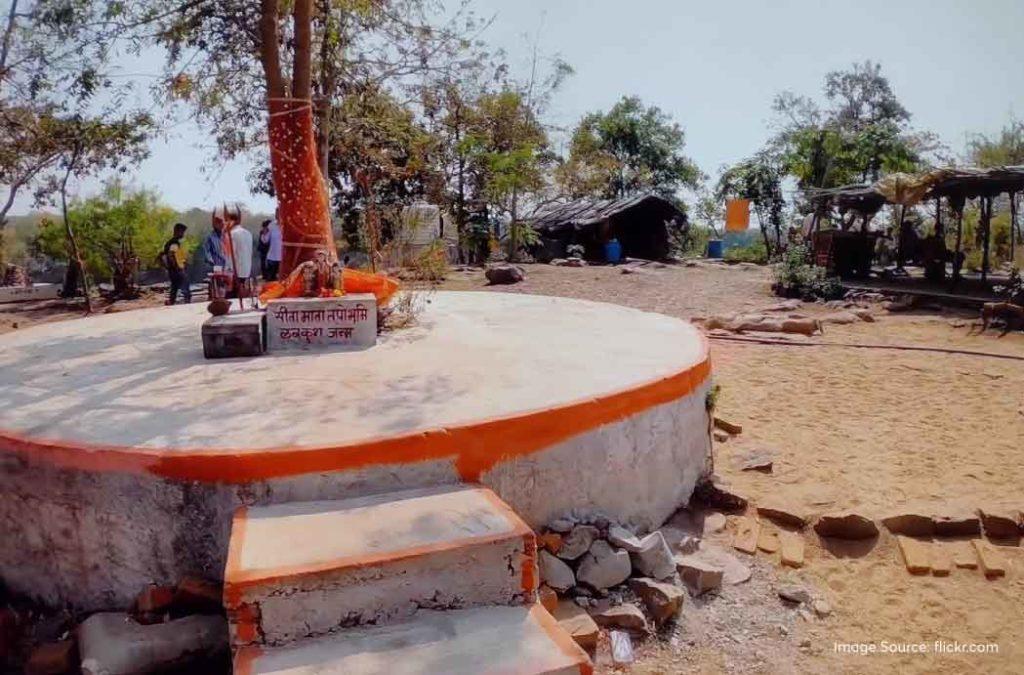
It also commemorates the uniting of Lord Rama with his sons right on this divine land of the ashram. As it is located on the hilltop, you need to climb a few steps to reach the main temple. Do visit the ashram of Maharishi Valmiki Jayanti for spiritual processions and authentic celebrations.
Modern Day Relevance of Maharishi Valmiki Jayanti
Impact of Media
The current times invite a dynamic environment where celebrations are not just modern but also meaningful. Such is the case of Maharishi Valmiki Jayanti in India. Now that social media and internet facilities are widely available, you can browse through many posts, pictures and videos dedicated to the sage.
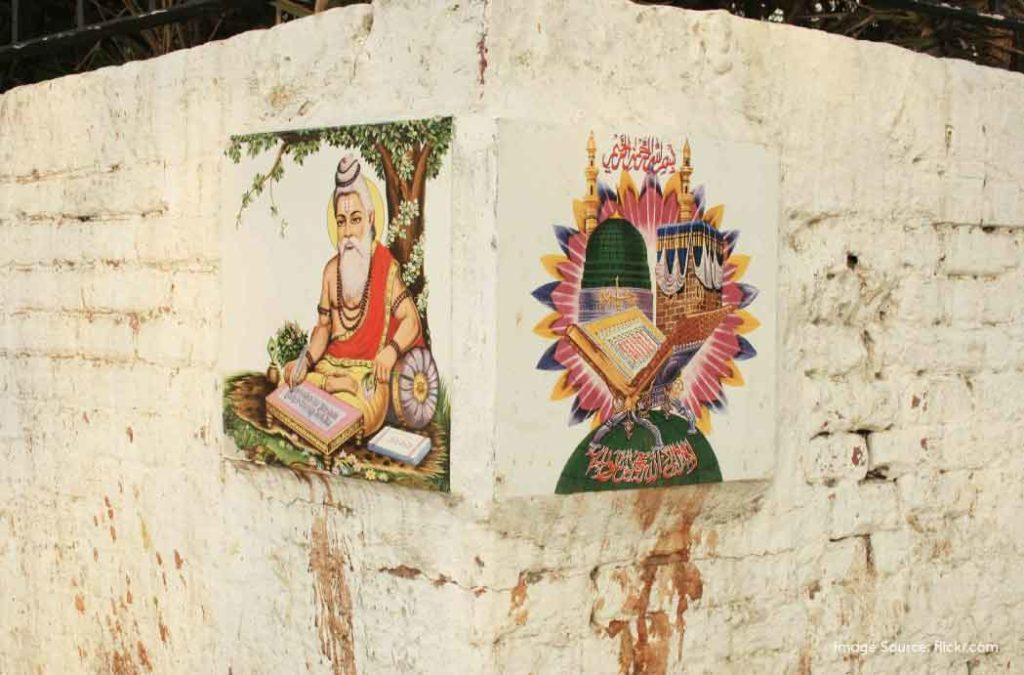
These videos sometimes take you through the history of the creation of Ramayana, thereby making it meaningful for the youth. Many pictures with elaborate captions help viewers understand the deeper meaning of the day instead of just mere celebration. With news channels available everywhere, you can also witness celebrations in other states and cities, thereby offering a sense of a greater community.
Efforts by Educational Institutes
Similarly, the trend is popular in various educational institutions. Students are introduced to the stories of mythologies and religion in a plethora of ways. These institutes take wonderful initiatives by organising plays and performances. They might even organise story-telling competitions to help students learn comprehensively. Competitions range from artistic drawings of Maharishi Valmiki to speech deliveries on his contributions.
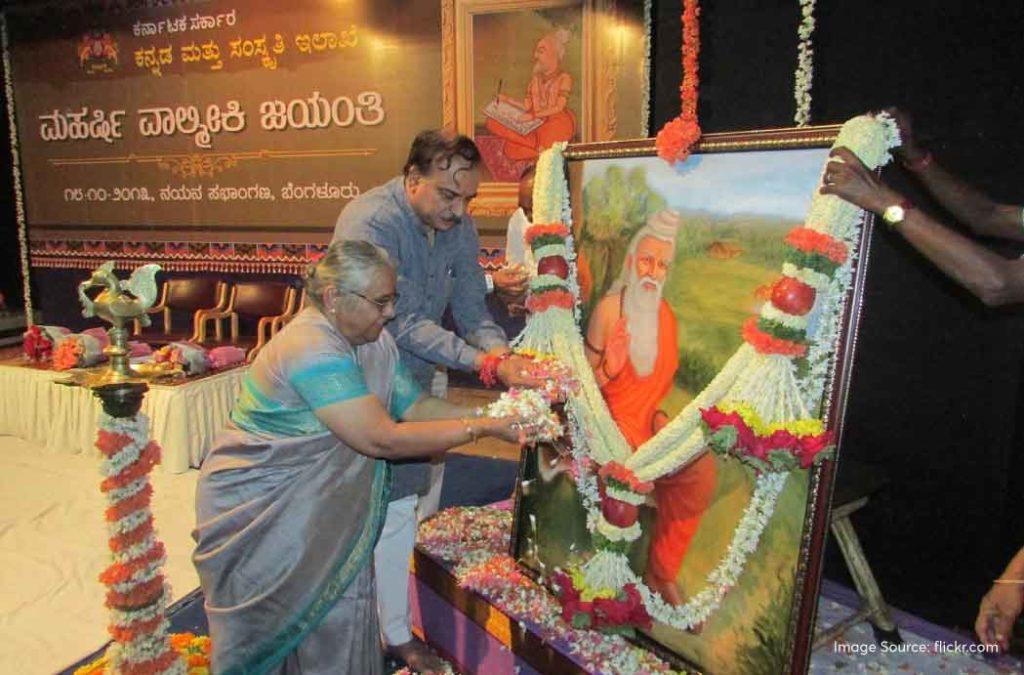
What elevates the feel of the day are numerous posters on school walls, digital wishes for parents and initiatives for raising awareness. At times, schools and universities also conduct workshops wherein students are taught the virtues and values mentioned in the Ramayana.
New Idea of Worship
You must be shocked at how the internet has transformed the idea of worship. People can now connect simply via a phone call or an online meeting. That’s exactly why many cultural centres and institutes organise an online meeting. People join and pray together on this auspicious day. Moreover, you can also be a part of meditation sessions and virtual readings of the Ramayana.
Final Thoughts on Maharishi Valmiki Jayanti!
Maharishi Valmiki Jayanti is more than a celebration of the day. It embraces values of compassion, honesty, and selfless service among the people of India. It also stands as a strong reminder of our rich traditions and mythological connections.
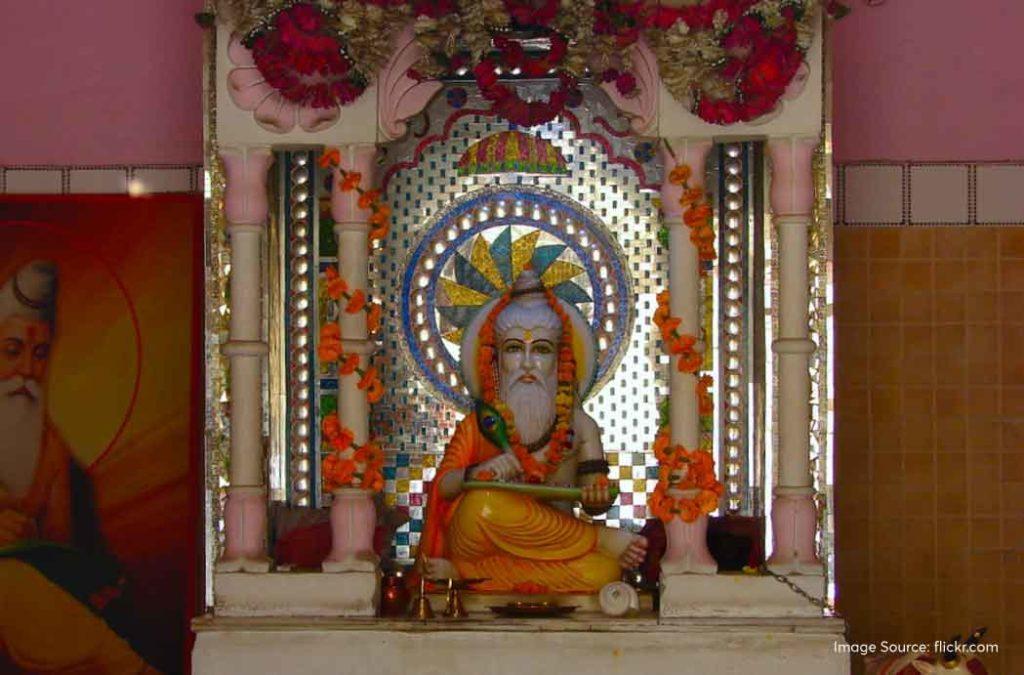
So, take this opportunity to visit an ashram, spend some time in tranquillity and hear the stories of sage on this auspicious day. The teachings of Valmiki reflect in everyday life, thereby making the Ramayana a true epic!




















